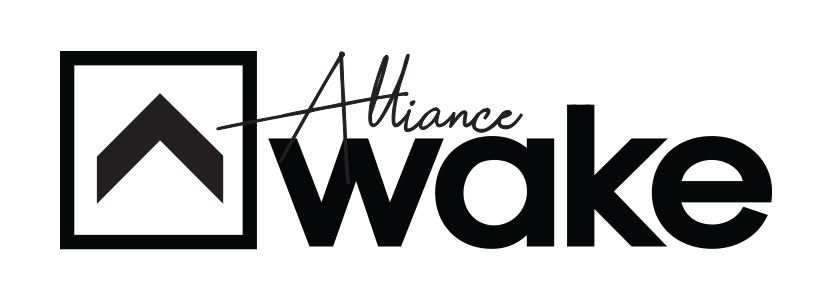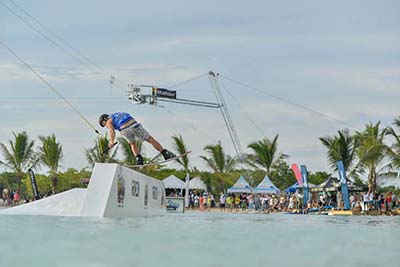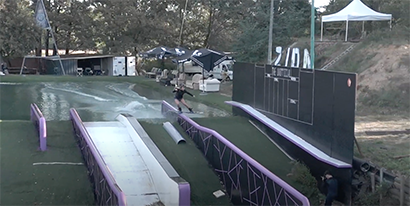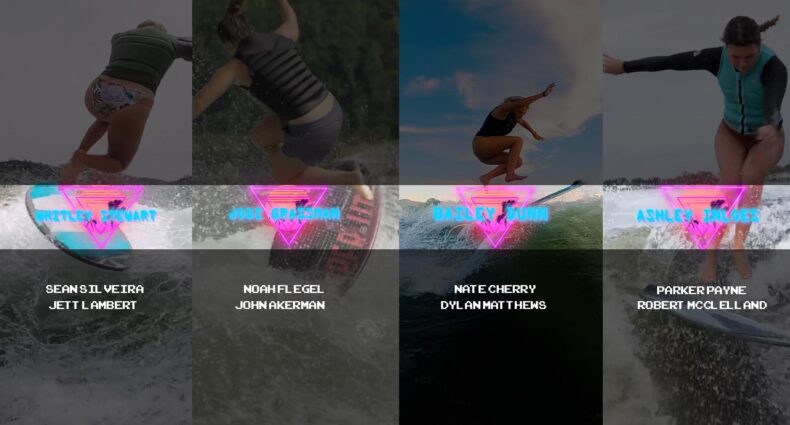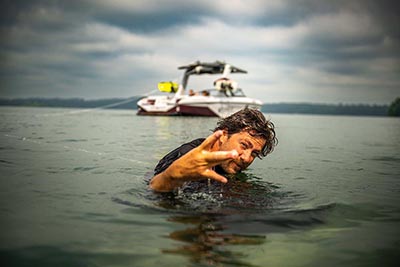MAY 2019 | Endless Wave – Brian Grubb
 Brian Grubb after the learning curve spreading his wings (photo: Mathis)
Brian Grubb after the learning curve spreading his wings (photo: Mathis)
Alliance: You’ve been riding behind the boat for a while. When did you start wakeskating and when was the first time you tried wakesurfing?
Brian: I grew up riding behind the boat, doing a little bit of everything. I first started wakeskating in high school when I started seeing Scott Byerly and Thomas Horrell doing it in the mags. We put grip tape on a WakeTech Flight69 board, and that was the first time I tried skating. We would slam one side of the boat with people back then to wake surf, too, on just normal surfboards. I learned how to ride frontside before backside because it took so long to switch the weight from one side to the other.
A: Being a longtime athlete for Malibu Boats, what significant changes have you seen in their boats that have enhanced wakesurfing?
B: Malibu has been building awesome wake boats for decades but they changed the entire boating industry when they introduced the SurfGate in 2011. We no longer needed to overweight one side of the boat to make a wave to surf, and that really was a game changer. I know I started boat surfing a lot more once I got my first Malibu with SurfGate because I could just leave the boat weighted the same as when I skate and press a button to make the wave. Malibu created the surf boat and still has the best waves in the industry.
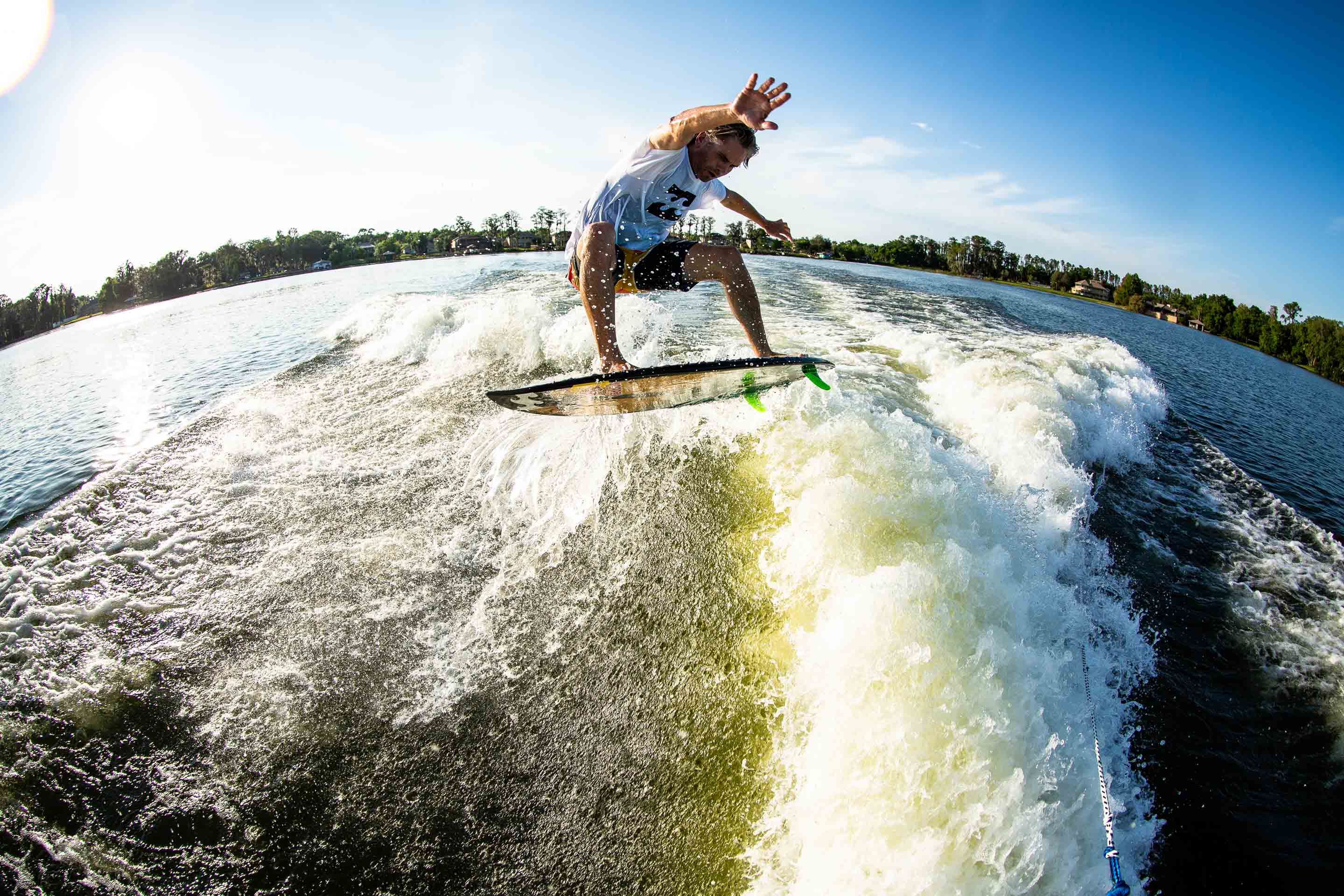 The wakesurf game was changed with SurfGate (photo: Mathis)
The wakesurf game was changed with SurfGate (photo: Mathis)
A: Have you ever competed in wakesurfing? Do you plan to?
B: I’ve competed a few times but never really had much fun in that space. I went to the Worlds a few years ago and it was not a good experience. Seems like some of the people that ride those events take wakesurfing way too seriously for me. It’s something I’ve always done for fun and I prefer to keep it that way. I chief-judged the WWA Surf Nationals last year and have been helping the WWA move forward with producing more fun boat surfing competitions this year and in the future.
A: Besides the speed, what are some similarities and differences between wakeskating and wakesurfing?
B: There are some similarities between the two sports, for sure, and that was my draw to start surfing skimboards behind the boat many years ago. A lot of the tricks you see are done in both sports, but they are a lot different as well. Wakeskating is much more diverse because you can ride behind boats, skis and cables and hit winch spots and rails. It’s also way harder, and the slams can actually hurt.
 Boards on boards (photo: Mathis)
Boards on boards (photo: Mathis)
A: You know this one’s coming … what’s up with all the foiling?
B: *laughs* Foiling is one of the most fun things you can do behind the boat and in the ocean! It’s a feeling like nothing else. There is no drag, you can do big wrapping turns and ride any of the rollers behind the boat. I got hooked up with LIFT foils last year and have had a blast trying different wings in different conditions. They make all carbon fiber wings and masts, so the setups are super light and work killer.
A: What is your favorite thing about foiling that may convince the haters to give it a try?
B: Well, the only people that I’ve run into that hate foiling are people that haven’t tried it or people that can’t do it! It’s not easy like wakesurfing, and takes most people a few days to really get the hang of it. But that’s one of the things I like about it – it’s a challenge and rewarding for people to learn it and start flying. My favorite thing about foiling behind the boat is doing fast turns, cruising around to all the different rollers behind the boat and getting 20-minute rides!
A: Where do you see wakesurfing a few years from now?
B: It’s hard to say where wakesurfing will be in a few years. Obviously, all the boat companies are committed to building surf boats so there will be no shortage of waves to get on. Hopefully, boat surfing will continue to bring lots of people into wake sports in the future, as it has over the last decade. For me, I just want to continue riding different boards and progressing with new stuff like foiling. Like I’ve been riding the Hyperlite 3’9” Shim grom board a lot lately, and having a lot of fun with the small board. Feels like a wakeskate.
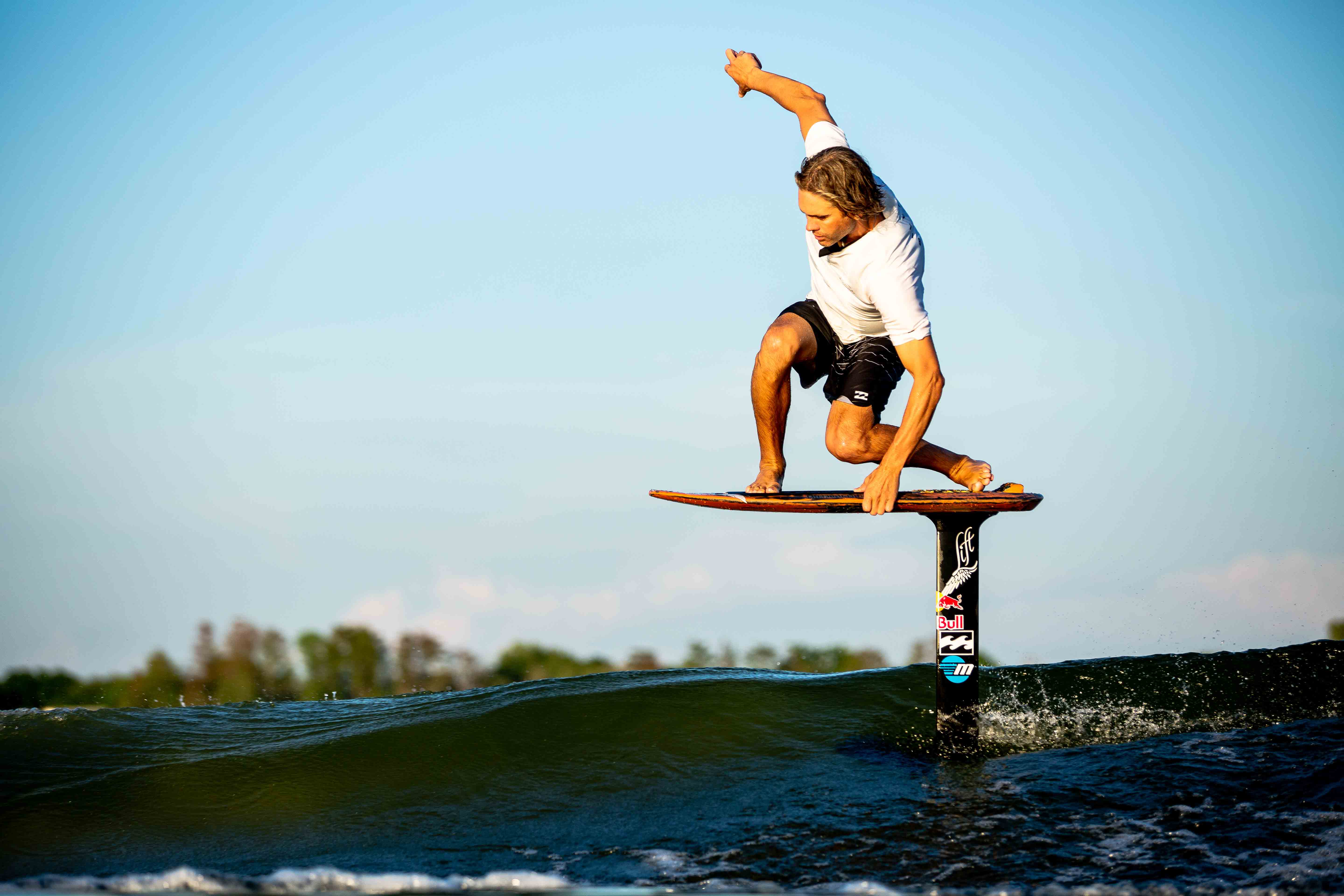 Zero drag (photo: Mathis)
Zero drag (photo: Mathis)
A: As an avid ocean surfer, how does wakesurfing/foiling help you in that world?
B: I think surfing and foiling behind the boat can definitely help your skills in the ocean, and vice versa. On my 23LSV, I can make a huge, long wave that is basically the same every time I set it up, and it’s endless! The boat does all the work and you can just enjoy the fun part of surfing. When you’re in the ocean, it’s always different and always changing. Most of ocean surfing is paddling and positioning and you don’t need any of that behind the boat. I surfed more days last year in Florida than probably ever because I had my foil to ride. I’d normally never go to the beach to surf when it’s two feet and onshore winds, but on my LIFT foil those conditions are super fun.
A: Do you see wakesurfing/foiling helping the watersports community grow?
B: Yeah, of course it’s going to help. We are boaters that don’t like to just drive around in the boat, we want to get behind it and have some fun. Wakesurfing has brought more people into watersports than any other boat sport in the last decade and I think that will continue. I have my fingers crossed that wakeskating will have a resurgence in the near future too!
A: The sun is about to set and you’ve got time for one: skydive, wakeskate, wakesurf or foil?
B: It’d be tough to pick just one. When Collin Harrington lived in Florida, we would do this thing he started calling the Florida Ultimate. Surf dawn patrol in the morning at the beach, do a couple of skydives around lunch time and be on the boat riding at sunset. That always made for a good day!
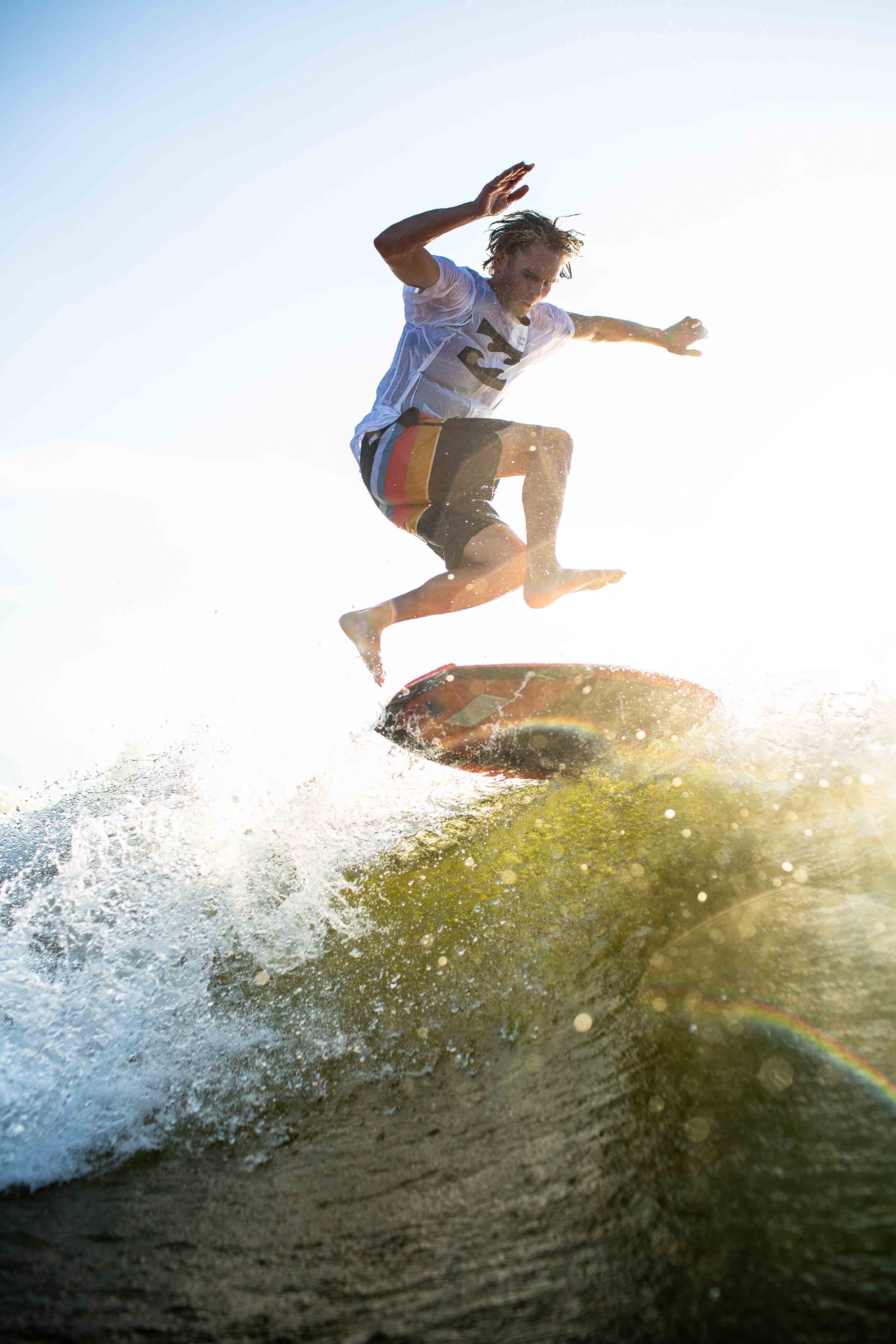 Bringing that wakeskate flavor (photo: Mathis)
Bringing that wakeskate flavor (photo: Mathis)
